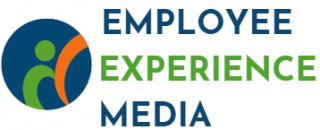
Navigating the Initial Stages
Initiating a Successful Strategy
Starting on the journey of understanding and navigating the complexities of long-term disability can be daunting for employees and employers alike. Initially, when an employee goes on disability leave, it's essential to comprehend the different stages involved. The first step usually consists of identifying whether the employee's condition qualifies for long-term disability benefits under the employer's policy. This involves evaluating medical documentation and the terms outlined in the disability insurance coverage provided by the employer. During this period, communication between the employee and their HR department is critical. Coordinating a clear line of communication will help clarify the waiting or elimination period required before benefits kick in. Additionally, understanding the implications of such insurance—whether it’s short term or long term—is vital to prepare adequately. Employees should also be aware of FMLA leave options that might offer additional job protection during their medical leave. This understanding aids in assessing what happens next and what other forms of support might be available within the framework of social security or workers' compensation. Importantly, having access to emotional and psychological support through initiatives like HR integrations for mental health can provide valuable aid in this journey.Financial Considerations and Support
Financial Support: A Crucial Element
Navigating the financial landscape is a vital step for employees facing long-term disability. It's essential to understand the different options available when it comes to disability benefits and insurance coverage. Here’s a closer look:- Long-Term Disability Insurance: This coverage often kicks in after a predetermined waiting period or elimination period. Employers typically offer long-term disability insurance as part of their employee benefits package, providing a percentage of the employee's salary when they can't work due to medical reasons.
- Short-Term Disability vs. Long-Term Disability: Short-term disability benefits generally cover the initial period immediately following a disability, whereas long-term disability coverage extends support if the condition persists. Understanding the transition between these two and the relevant terms of your employer's policy is critical.
- Social Security Disability Benefits: If an employee's condition is severe and long-lasting, applying for social security disability benefits may be necessary. This requires thorough documentation and can be a lengthy process.
- Health Insurance Continuity: Maintaining health insurance can be one of the biggest concerns during a disability leave. The Family and Medical Leave Act (FMLA) may provide some job protection and assurance of continued coverage, but employees should check their specific policy details carefully.
Impact on Career Trajectory
Career Progression Challenges
When dealing with long-term disability, one of the most significant concerns employees face is the potential impact on their career trajectory. Disabilities can force employees to take a leave, often requiring them to reassess their current role and future opportunities. This can stem from a combination of physical limitations and workplace adjustments required for their new work situation.
Employers play a crucial role in ensuring that an employee's career does not stall during this challenging period. It's vital for organizations to support their employees through comprehensive policies and programs. Providing clarity on how benefits like short-term and long-term disability insurance can affect job status is crucial. Ensuring open lines of communication helps the employee understand what happens during and after a disability leave.
Some employees may worry about missing out on promotions or being overlooked for raises and additional responsibilities. Therefore, it's important that companies develop transparent methods for evaluating performance, even when an employee is on medical leave. This allows for reasonable accommodations that might include flexible scheduling or altered job responsibilities upon the employee's return to work.
While the Family and Medical Leave Act (FMLA) offers job protection, it does not guarantee the exact same position will be available when the employee comes back. However, employers must ensure that returning employees are placed in roles that are equivalent in terms of pay, benefits, and other working conditions.
Ultimately, a well-structured disability benefits program can provide a safety net during these challenging times, allowing employees to focus on recovery without fear of career repercussions. Balancing these considerations helps both the employee and employer foster a more supportive and resilient work environment.
Emotional and Psychological Effects
Exploring Emotional and Psychological Aspects
Understanding the emotional and psychological effects of long-term disability on employees is crucial. When an employee goes through the transition from active work to taking medical leave, the emotional impact can be profound. The realization that a long-term disability affects one's personal trajectory often exacerbates feelings of uncertainty and vulnerability. Employers should recognize that emotional support is as important as financial assistance. Policies that consider employees' mental health can be vital during this transition. Considerations such as disability insurance coverage and the availability of benefits during the waiting period can alleviate stress related to the financial aspect, but emotional resonances require distinct approaches. Here are some ways an employer can support an employee's emotional well-being during this period:- Regular Communication: Maintaining open lines of communication before, during, and after the period an employee is on disability leave can foster a sense of inclusion and support.
- Access to Counseling: Providing access to mental health services or employee assistance programs can help employees navigate the psychological changes that accompany long-term absence from work.
- Creation of Support Networks: Establishing peer support groups within the organization can help employees realize they are not alone in their journey, mitigating feelings of isolation.
- Training Managers on Empathy: Supervisors and managers trained to understand the challenges of long-term disability can serve as compassionate points of contact.
Workplace Adjustments and Accommodations
Adjusting the Workplace Environment
Navigating the complexities of re-entering the workforce after facing a long-term disability requires thoughtful consideration and adjustments. Employers must be proactive in creating a supportive and accommodating work environment. Integrating reasonable accommodations is key to fostering an accessible space for returning employees. This may entail adjusting workspaces, modifying job duties, or considering flexible work hours that accommodate medical needs or limitations.Implementing Reasonable Accommodations
Every employee’s needs are unique, making it essential for employers to engage in open discussions to understand specific accommodation requirements. Possible accommodations might include:- Ergonomic Adjustments: Altering workstations to alleviate physical strain or discomfort.
- Flexible Work Schedules: Allowing staggered start times or telecommuting, which can be especially important during recovery periods.
- Assistive Technologies: Providing specialized equipment or software that facilitates job performance.
- Modified Responsibilities: Adjusting tasks to align with the employee's current abilities.













